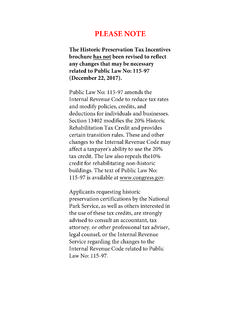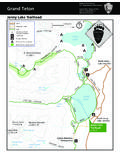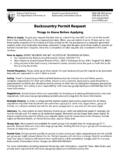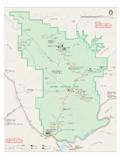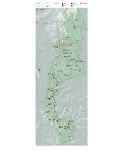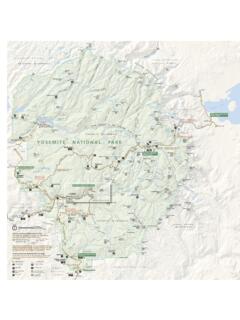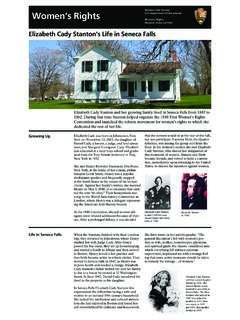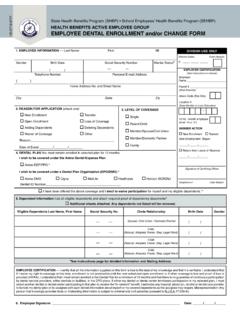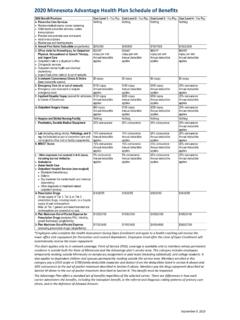Transcription of The Health Benefits of Companion Animals
1 1 Wilson, CC. (1991). The pet as an anxiolytic intervention. JNerv and Ment Disease 179 Allen, K. (2001). Pet ownership, but Not ACE Inhibitor Therapy,Blunts Home Blood Pressure Response. ;38 Friedmann, E., and Thomas, (1995). Pet ownership, socialsupport and one year survival amoung post-mycardialinfarction patients in the cardiac arrhythmia suppression trial(CAST). Am J Cardiology 76 Anderson, , Reid, , Jennings, (1992). Pet owner-ship and risk factors for cardiovascular disease. MedicalJournal of Australia 157:298-3015 Eddy, (1996).
2 RM and Beaux: reduction in cardiac responsein response to a pet snake. J Nerv and Ment Disease184(9) Friedmann, E., Katcher, , Thomas, , Lynch, ,Messent, (1983). Social interaction and blood pressure:Influence of animal companions. J Nerv and Ment Disease171(8) Katcher, , Friedmann, Beck, , Lynch, J. (1983). Looking,talking and blood pressure: The physiologic consequences ofinteraction with the living environment. In: NewPerspectives on Our Lives with Companion Animals (AHKatcher, AM Beck, eds) 1983 (p.)
3 351).8 Allen, , Blascovich, J. (2002). Cardiovascular reactivity andthe presence of pets, friends and spouses: the truth aboutcats and dogs. Psychosomatic Medicine 64 DeSchriver, , Riddick, (1990). Effects of watchingaquariums on elders' stress. Anthrozoos 4(1) Odendaal, J. (2000). Animal-assisted therapy - magic or medi-cine? J Psychosomatic Research 49(4):275-280. 11 Barker, S., Knisely, J., McCain, N., Best, A. 2005. MeasuringStress and immune response in healthcare professionsal fol-lowing interaction with a therapy dog: pilot Reports 96 Gern, J.
4 , Reasdon, C., Hoffjan, S., Li, Z., Rogberg, K., Neaville,W., Carlson-Dakes, K., Alder, K., Hamilton, R., Anderson, E.,Gilbertson White, S., Tisler, C., Dasilva, D., Anklam, K.,Mikus, L., Rosenthal, L., Ober, C., Gangon, R., Lemanske, R.(2004). Effects of dog ownership and genotype on immunedevelopment and atopy in infancy. J Clinical (2) Celed n, J., Litonjura, A., Weiss, S., Gold, R. (2002). Exposureto cat allergen, maternal history of asthma, and wheezing inthe first 5 years of life. The Lancet 360 Oberle, D.
5 , von Mutius, E., von Kries, R. (2003). Childhoodasthma and continuous exposure to cats since the first yearof life with cats allowed in the child's bedroom. Allergy58(10) Svanes, C. Heinrich, J., Jarvis, D., Chinn, S., Omenaas, E.,Gulsvik, A., Kunzli, N., Burney, P. (2003). Pet-keeping inchildhood and adult asthma and hay fever. J Allergy ClinicalImmunology 112(2):263-26416 Hesselmar, B., Aberg, N., Aberg, B., Ericksson, B., Bjorksten, B.(1999). Does early exposure to cat or dog protect againstlater allergy development?
6 Clinical Experimental Allergy29:611-61717 De Meer, G., Toelle, B., Ng, K., Tovey, E., Marks, G. (2004).Presence and timing of cat ownership by age 18 and theeffect on atopy and asthma at age 28. Journal of AllergyClinical Immunology 113(3) Charnetski CJ., Riggers S. (2004). Effect of petting a dog onimmune system function. Psychological reports 95 Irani, S., Mahler C., Goetzman L., Russi EW., Boehler, A. (2006).Lung transplant recipients holding Companion Animals :impact on physical Health and quality of life.
7 Am JTransplant. 6(2) Sobo. E., Eng, B., Kassity-Krich, N. (2006). Canine VisitationTherapy Pilot Data on Decreases in Child Pain Perception. Jof Holistic Nursing, Vol. 24 (1) 2006; Serpell, (1990). Evidence for long term effects of pet own-ership on human Health . In: Pets, Benefits and Symposium 20. (IH Burger, ed) (p. 1-7), Siegel, (1990). Stressful life events and use of physicians'services among the elderly: the moderating role of pet own-ership. J Pers Soc Psychol 58 Straede, C., Gates, G.
8 1993. Psychological Health in aPopulation of Australian Cat Owners. Anthrozoos 6 Barker, S., Barker, R. 1988. The Human-canine bond: Closerthan family ties. Journal of Mental Health Counseling 10 Akiyama, H., Holtzman, J., Britz, W. (1986). Pet ownership andhealth status during bereavement. Omega 17(21) Garrity, , Stallones, L., Marx, , Johnson, (1989).Pet ownership and attachment as supportive factors inhealth of the elderly. Anthrozoos 3(1) Carmack, (1991). The role of Companion Animals forpersons with AIDS/HIV.
9 Holistic Nurs Pract 5(2) Castelli, P., Zasloff, (2001). Companion cats and thesocial system of men with AIDS. Psych Reports 89 Siegel, , Angulo, , Detels, R., Wesch, J., Mullen, A.(1999). AIDS diagnosis and depression in theMulticenter AIDS Cohort Study: The ameliorating impactof pet ownership. AIDS Care 11 Kidd, A., Kidd, R. (1994). Benefits and liabilities of pets forthe homeless. Psych Reports 74 Singer, , Hart, L., Zasloff, R. (1995). Dilemmas associ-ated with rehousing homeless people who have compan-ion Animals .
10 Psych Reports 77 Rew, L. (2000). Friends and pets as companions: strategiesfor coping with loneliness among homeless youth. JChild and Adolescent Psych Nurs 13(3) Valentine, , Kiddoo, M., LaFleur, B. (1993). Psychosocialimplications of service dog ownership for people whohave mobility or hearing impairments. Soc Work HealthCare 1993;19(1) Kirton, A., Wirrell, E., Zhang, J., Hamiwka, L. (2004).Seizure-alerting and -response behaviors in dogs livingwith epileptic children. Neurology 2004;62 Lockwood, R.
